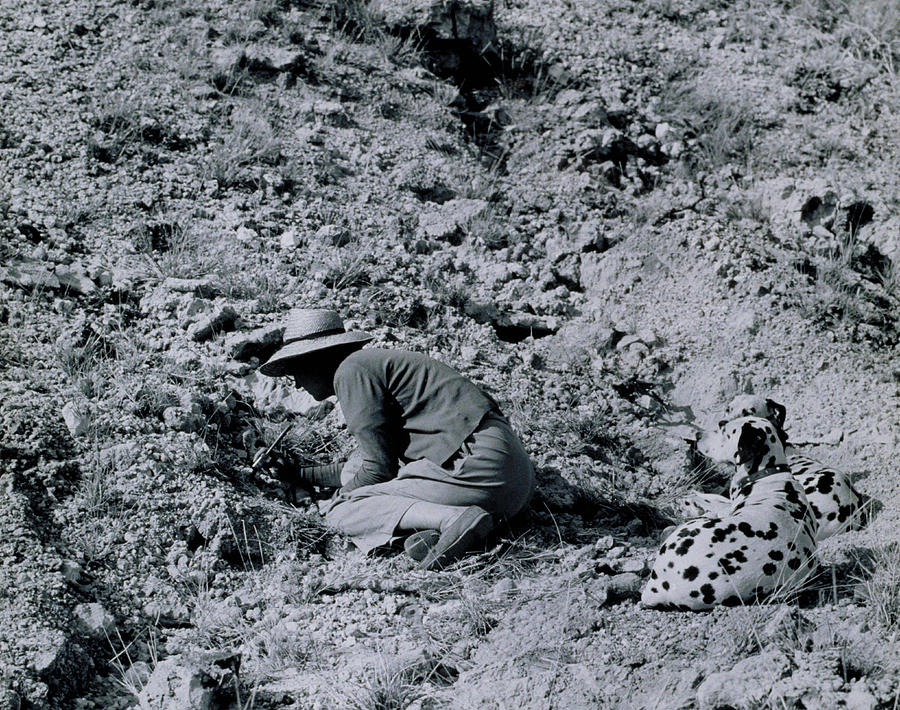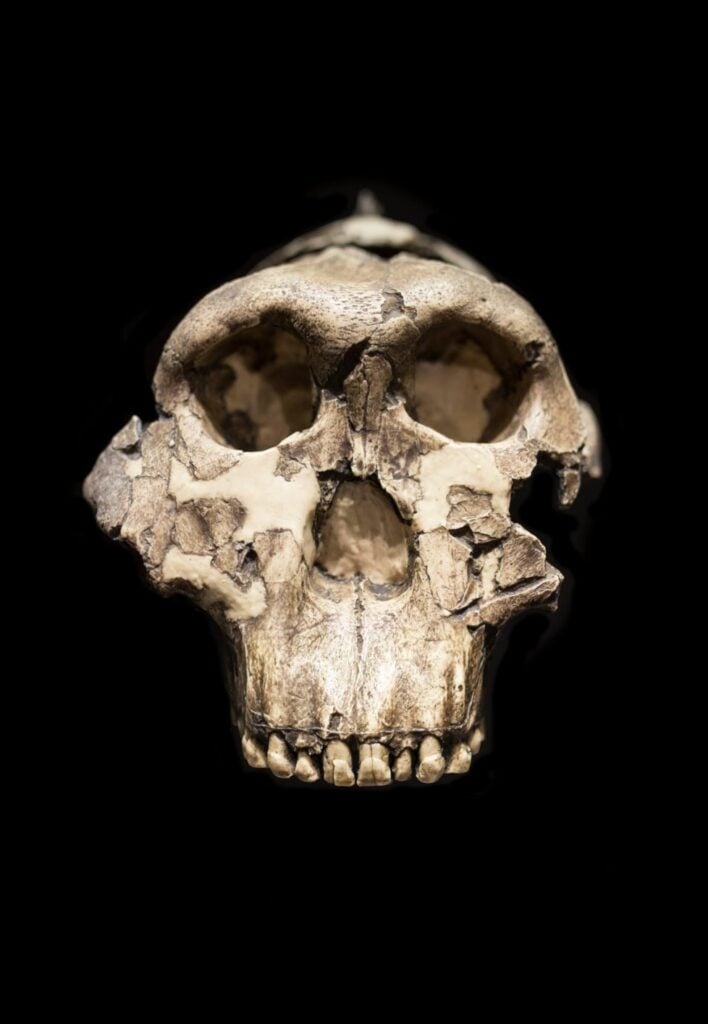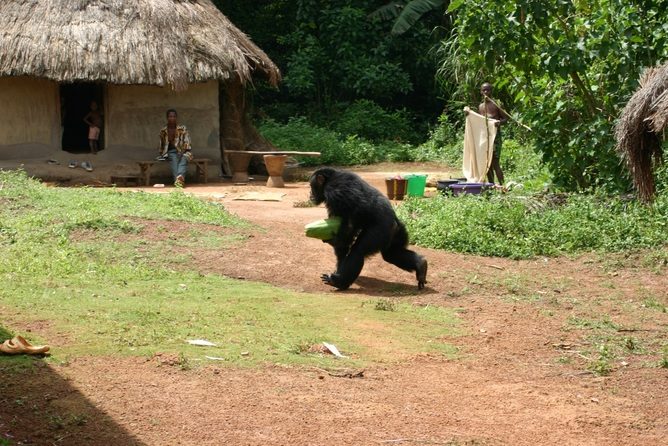Guest Post | Today in History

By Carol Broderick
On July 17, 1959, Mary Leakey left her camp and went out to search the layers of sediment in Olduvai Gorge in Tanzania, as she and her husband Louis Leakey had done for almost 30 years. Their primary goal was to find fossils of our human relatives (hominins), and as hot, dusty, backbreaking, painstakingly slow and what many friends and fellow scientists might call impossible as that goal seemed, they were determined to reach it.
Louis was home with a fever that day so Mary continued their search with the company of her two Dalmatians when suddenly she saw two large teeth protruding from the hillside. She stopped, stunned, knowing immediately they were from one of our ancient relatives. She ran back to camp to tell Louis, who was as excited as Mary. His enthusiasm may have been a bit dampened as he looked at the enormous molars and realized that this was probably not a direct ancestor of ours, but any diminished excitement quickly disappeared as he recognized what Mary had found: a hominin and probably a distant relative of our own species, Homo sapiens – a “priceless discovery,” and what would become at the time “the remains of the earliest man ever found.” 1

The most exhausting and difficult of the tasks was yet to be undertaken: excavating and reconstructing the more than 400 crushed pieces of the skull of this relative, a laborious task Mary undertook with the help of her co-worker, Kamoya Kimeu. What they recreated was truly astonishing, a hominin with huge molars, twice the width of ours, a massive jaw, and most eye-catching of all, a thin line of bone called a sagittal crest at the top of its head, a feature that’s shared with gorillas, our close relatives.
The Leakeys called their new discovery Zinjanthropus boisei (Zinj is an old name for East Africa; boisei acknowledges Charles Boise, a supporter of the Leakeys during those long, difficult years). They referred to it as “Zinj” or “Dear Boy.” The press nicknamed it “Nutcracker Man” because of its huge jaws and teeth. The Leakeys’ famous fossil find is now called Paranthropus boisei or Australopithecus boisei, and it occupies a significant, if not direct, branch on our family tree.2

Since this exciting discovery, more parts of the “Zinj” skeleton have been found, enough to know that its skull contained a brain one-half the size of modern humans and that it walked on two legs (or was “bipedal”) 1.75 million years ago.3 Later, Mary and Louis Leakey discovered what has been accepted by most scientists as a direct ancestor of ours, Homo habilis, in the same layers of rock and dirt at Olduvai Gorge.
Two million years ago, deep in our past, these two bipedal hominids may have crossed paths on the shores of one of Tanzania’s lakes in East Africa. Imagine the surprise as they looked into each other’s eyes and experienced a flash of recognition, confirming the Leakeys’ belief that our family tree did, indeed, have many different branches and that, as Darwin had predicted, those roots originated in Africa.
About the author: Carol Broderick is a Leakey Foundation Fellow and volunteer. She regularly contributes to The Leakey Foundation blog on topics of science history. Read more of Carol’s work in her “Fossil Finders” series.
Bibliography
1Leakey, L.S.B. “Finding the World’s Earliest Man.” National Geographic, September 1960.
2,3Leakey, L.S.B. “A New Fossil Skull from Olduvai.” Nature, August 15, 1959.


